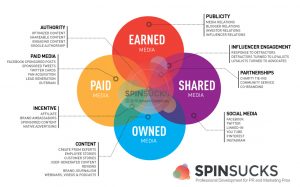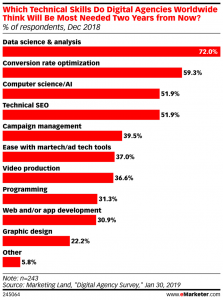I never knew this, but advertising legend Jay Chiat used to send valentines to his agency. I discovered this as another advertising, legend Lee Clow, retired. I stumbled across the love letter he penned by chance, perhaps fate. Looking back, he said he would not trade a day doing what he did.
I wish I could say the same. I have to admit I have often scowled to myself whenever someone has described me as the “advertising girl” (and yes, that is an exact quote). It’s hard to believe, but when I look back at the start of my college days, my goal was to work in advertising and public relations. I was lucky to have worked with some great people at the (now) Audubon Nature Institute as an intern. The joy they brought to their jobs only made me want it more. I would sit on the floor applying mailing labels to envelopes for our next press release. I spent almost an entire afternoon with a camera fixed on a lowland gorilla waiting for him to make the funny move everyone loved because we knew it would be the fitting ending to our upcoming television commercial.
But when I discovered branding. My world was never the same. To me, my destiny was brand marketing, not advertising. I didn’t know my new love could co-exist with my former dream job. I somehow felt that advertising was lesser by comparison.
Moreover, in the current consumer-focused market, the word “advertising” has become almost dirty or evil as if there were some wizard behind a curtain manipulating us (or trying to). Lately, you can add “unrealistic body expectations” to the arsenal of arguments against advertising. Each day I read something telling us we should turn our backs on advertising and concentrate on inbound, or one-to-one, or marketing automation or…or…or.
Less of a wizard and more of a guide
At the very least, advertising is informative – telling the consumer what is available as options to them in the market. Tales of its death aside, it is often the first tool marketers consider when introducing something new or improved. When applied correctly, advertising can often imbue a product with qualities that are hard to describe in copy yet easily seen in visuals – things such as aspiration or youthfulness.
Advertising winners, however, are can often be the result of the best creative rather than the best product. However, these highly-creative messages can also be the best way to spread awareness about public concerns. It can be an effective and powerful way to tell the story of news that might otherwise be cumbersome to read through on your own. Think about the awareness around AIDS and how advertising served to deliver an accurate and factual message to combat the rumors that were frightening so much of the public.
As little as ten years or so ago, some marketers ONLY concerned themselves with paid advertising, but in the current era of social and digital media, some lose their way and see only organic posts as the way to go. In truth, well-balanced communication programs need to be a balance of paid, earned, shared, and owned media.
In our current era of marketing, many might ask why we would continue to spend money on advertising when marketers can do so much for “free.” Create a Facebook page or Instagram account or both. Send an email. However, while it’s easy to write advertising off because of the expense, the truth is you’d gladly write a check for a dollar if you knew you’d get more in return. The fact is that when advertising doesn’t happen, it is typically because of a lack of understanding of the various mediums and how to set and measure goals and results.
Why advertising is important
The bottom line is that consumers seldom buy products they’ve never heard of. Advertising puts you in the consideration set of their mind.
If you’re a new business or new to the area, advertising is probably your straightest path to creating awareness. Moreover, whether your business is bricks and mortar or online, advertising will be an essential part of your marketing plan. As competition increases, advertising becomes ever more critical, giving you a platform to deliver an emotional connection to your benefits and features in an arena that you can control.
The next time you sit down to watch your favorite network television show, you can thank advertising for the ability to watch it for “free.” Although it can be irritating to have a commercial interrupt an intense scene, there is no denying that advertising is relevant and influential.
Why advertising works
Understanding each medium and its audience allows you to target the right customer for the right message.
The control is in your hands. Advertising allows you to determine the exact time and location of your messages.
 As a crucial part of the PESO model of communications, paid advertising can boost your earned (such as public relations), shared (social media), and owned (your website and email) efforts. Journalists often find exciting stories from the commercials they see in advertising. Even I have penned an annual review of Super Bowl ads.
As a crucial part of the PESO model of communications, paid advertising can boost your earned (such as public relations), shared (social media), and owned (your website and email) efforts. Journalists often find exciting stories from the commercials they see in advertising. Even I have penned an annual review of Super Bowl ads.
As I mentioned in an earlier column, advertising has been around for hundreds of years. Ever-evolving, the science and art of advertising has evolved even since I started this career. No longer restricted to television, radio, billboards, and print, advertising can be found in several expected and unexpected places. I recently read a story about church bells. We hear them in the distance, telling us it is time to worship. That’s advertising even if we’ve never seen it as such.
Advertising continues to expand into new areas that are worth a look.
Over the Top
With the ever-growing popularity of streaming and the unique programming being produced by services such as Amazon, Hulu, and Netflix, all marketers should become well-versed in OTT or “over the top” media. OTT is the commonly used term to describe such content providers. We continually see research showing the evolution of television viewing. What was once must-see-TV has become must-stream-content. As consumers replace their televisions, more and more of them are cutting the cord and adding HDMI sticks, game consoles, and streaming boxes to those newer, smart televisions. The obvious conclusion is that if you’re only advertising on network or cable, you could be missing a growing segment. Marketers can utilize content that must be seen either before or during streaming.
Wait! Ads on Netflix? Keep calm and advertise away. Premium subscriptions are not likely to start adding commercial inventory, but there are still several streaming outlets for your advertising messages. Also, while most of these cord-cutters are skewing young, there is still a significant number of Baby Boomer and Gen X adults using online streaming as well as cable or satellite (which provides streaming through on-demand products.) Have you seen the latest season of Grace and Frankie? Networks are also getting into the fray with on-demand viewing of their programming.
Much like digital, advertisers can target and measure through this medium. As with traditional television production, success is dependent on clear and creative messaging. It’s still a wide-open territory, but one certainly worth exploring. Although the medium is still in its infancy and loaded with challenges, it continues to evolve, providing marketers with more ways to target specific audiences.
Geofencing, but better
At this point, we’ve all had, at minimum some, discussion of geofencing – targeting the mobile phones of an audience that has crossed an invisible digital fence. It is a great and easy way to send an offer to someone when they are at your competitor’s place of business. How dare they!
The majority of our company’s work is in the field of casino marketing. Geofencing is growing in importance and finding a place in most marketing plans. We know casino customers are what we call “promiscuous” – even when a customer says they are loyal to Casino A, they will still split their wallets with Casinos B, C, and sometimes, D. In their minds, they are always faithful.
A similar situation can be found in other industries. The fast food industry is notorious for continually adding value items to get hungry consumers in their drive-through. Two years ago, that war was fought through the mobile phone. Burger King offered Whopper sandwiches for a penny! The offer was unlocked if you were a Burger King customer (with their app) and you were near a McDonald’s (a digital fence).
This easy to use tactic is perfect for personal injury attorneys geofencing emergency rooms or car dealers geofencing their competitors. Universities can geofence high schools to deliver an informative message that could make a difference as a student decides where their future lies.
We’ve used it ourselves to market TO casino marketers during various gatherings.
Now, we have addressable geofencing. The medium is ideally suited for casinos because of the detailed customer database in their marketing toolboxes. With a list of addresses, addressable geofencing can extend the reach and frequency of existing direct and media campaigns to active and inactive customers. Physical addresses can be uploaded and matched against plat line data to create digital fences at each address. Then conversion zones are designed to measure the impact of your efforts. If desired, you can also add desktop, laptop, and OTT devices at those addresses.
No longer a soft skill
 The evolution of advertising, along with the incredible amount of data at our fingertips, has turned the historically soft-skill to one that requires a fine-skilled hand. A Marketing Land survey in 2019 predicts “data science & analysis” as the #1 skill that will be needed by digital agencies worldwide. As advertising becomes increasingly data-driven, this skill will be invaluable. According to research by YouAppi and Dimensional Research, 67% of marketers have increased their focus on data and analysis over the past five years.
The evolution of advertising, along with the incredible amount of data at our fingertips, has turned the historically soft-skill to one that requires a fine-skilled hand. A Marketing Land survey in 2019 predicts “data science & analysis” as the #1 skill that will be needed by digital agencies worldwide. As advertising becomes increasingly data-driven, this skill will be invaluable. According to research by YouAppi and Dimensional Research, 67% of marketers have increased their focus on data and analysis over the past five years.
eMarketer principal analyst Nicole Perrin sees that advanced attribution techniques becoming more common, require roles throughout the marketing department to require competence in understanding and manipulating data.
Not your grandfather’s advertising
In his letter, Lee Clow said, “The years I spent doing this thing called advertising have been fun, challenging, rewarding, maddening, sometimes painful, but mostly joyful. And I wouldn’t trade a day of it for anything else. Every day to come to ‘work’ with the smartest, freest, most passionate people in business; all of us with the goal of creating messages to put out into the world that will be noticed, that people will talk about, even become famous. They make people laugh, or cry, or think…discover something new, see the world differently, maybe even buy something…”
I have to agree. I come to work every day and help marketers achieve business and personal goals. To have the opportunity to work in these days of advertising evolution is the career I never thought I’d have when I was beginning.
Dear advertising, you are still my dream job.
A version of this previously appeared in other publications.


Recent Comments